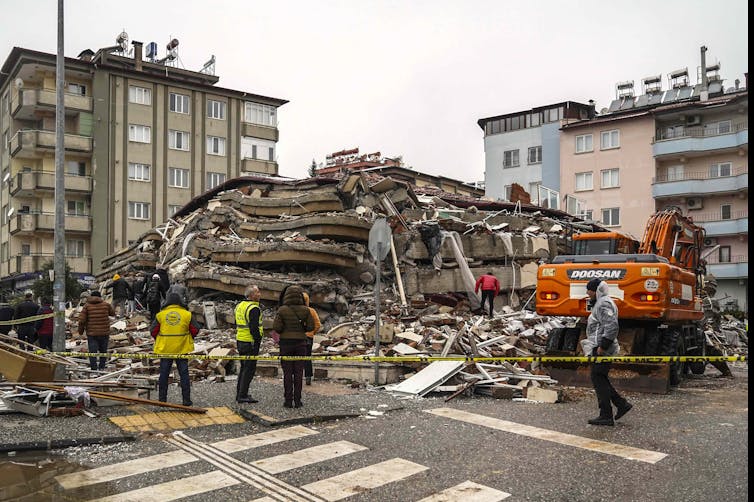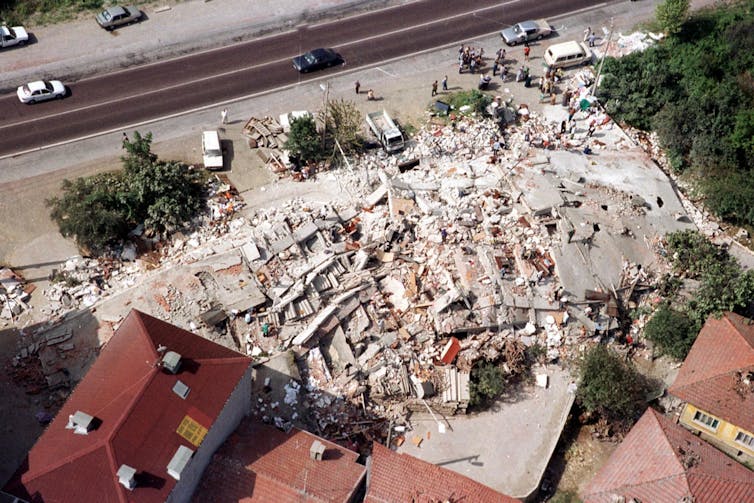.jpg?ext=.jpg)
The process for releasing the ALPS-treated water (Image: Tepco)
Tokyo Electric Power Company (Tepco) announced it has begun releasing treated water currently stored at the damaged Fukushima Daiichi nuclear power plant into the ocean. The operation - expected to take up to 30 years to complete - is being closely monitored by the International Atomic Energy Agency (IAEA).
At the Fukushima Daiichi site, contaminated water - in part used to cool melted nuclear fuel - is treated by the Advanced Liquid Processing System (ALPS), which removes most of the radioactive contamination, with the exception of tritium. This treated water is currently stored in more than 1000 tanks on site. The total tank storage capacity amounts to about 1.37 million cubic metres and all the tanks are expected to reach full capacity in late 2023 or early 2024.
Japan announced in April 2021 it planned to discharge treated water stored at the site into the sea over a period of about 30 years.
On 22 August, the government announced that it had decided to request Tepco begin preparations for the release of ALPS-treated water into the sea.
On the same day, the company transferred a very small amount of ALPS-treated water - about 1 cubic metre - to the dilution facility using the transfer facilities. This water was then diluted with about 1200 cubic metres of seawater and allowed to flow into the discharge vertical shaft (upstream water tank). The water stored in the discharge vertical shaft was then sampled.
"The results showed that the analysis value is approximately equal to the calculated concentration and below 1500 becquerels per litre," Tepco said today. "The sample of the water was also analysed by the Japan Atomic Energy Agency, who confirmed that the analysis value is below 1500 Bq/litre." In comparison, the World Health Organization guideline for drinking water is 10,000 Bq/litre.
Tepco therefore announced it has now moved to the second stage of the water release, the continuous discharge into the sea. At the same time, the company began transmitting data from various points in the process to the IAEA.
"Today at 1.00pm, the seawater transfer pumps will be started up and we will commence the discharge," Tepco said ahead of the process beginning. "During the discharge, one tank group-worth of ALPS-treated water from the measurement/confirmation facility, and the water already stored in the discharge vertical shaft (upper-stream storage) during Stage 1, will be continuously transferred/diluted and discharged into the sea.
"Furthermore, today, the intake/vertical shaft monitors will be put into operation in preparation for the discharge into the sea. We also started uploading real-time data pertaining to the discharge of ALPS-treated water into the sea to our website."
IAEA monitoring
When Japan announced the discharge plan in 2021, it asked the IAEA to review its plans against IAEA safety standards and monitor the release. Neighbouring countries have raised concerns and opposed the planned discharge. An IAEA Task Force was established to implement the assistance to Japan, which included advice from a group of internationally recognised experts from Member States, including members from the region, under the authority of the IAEA Secretariat. The IAEA opened an office at the Fukushima Daiichi plant last month.
"IAEA experts are there on the ground to serve as the eyes of the international community and ensure that the discharge is being carried out as planned consistent with IAEA safety standards," said IAEA Director General Rafael Mariano Grossi. "Through our presence, we contribute to generating the necessary confidence that the process is carried out in a safe and transparent way."
The agency, which confirmed that the discharge had begun, noted: "The IAEA's independent on-site analysis confirmed that the tritium concentration in the diluted water that is being discharged is far below the operational limit of 1500 becquerels per litre."
The IAEA said it will have a presence on site for as long as the treated water is released. It also announced the launch of a webpage to provide live data from Japan on the water discharge, including water flow rates, radiation monitoring data and the concentration of tritium after dilution.
The IAEA experts will observe onsite activities related to the ALPS-treated water discharge, including samples and measurements, and will interface with Tepco and officials from Japan's Nuclear Regulation Authority. The IAEA will also organise review missions periodically to observe activities on site and to request updates and additional data from Japanese authorities. The IAEA said its independent corroboration activities will also continue during the entirety of the discharge and will involve IAEA laboratories and third-party laboratories.
"All of these activities will work together to provide a comprehensive picture of the activities taking place at the Fukushima Daiichi nuclear power plant related to the ALPS-treated water discharge and whether these activities are consistent with relevant international safety standards," said Gustavo Caruso, Director and Coordinator for the ALPS Safety Review at the IAEA and Chair of the Task Force. "The data provided by Tepco, and displayed both by Tepco and IAEA, is just a single piece of the overall monitoring approach and the IAEA's ongoing safety review."Researched and written by World Nuclear News Source: World Nuclear News



